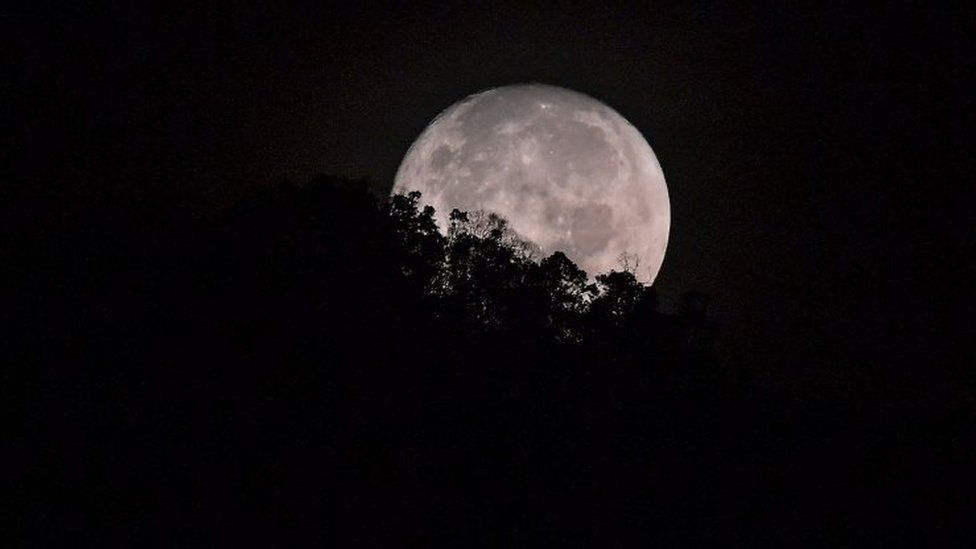SpaceX to fly two tourists around Moon in 2018
- Published

US private rocket company SpaceX has announced that two private citizens have paid to be sent around the Moon.
The mission is planned for late 2018, SpaceX CEO Elon Musk said, adding that the tourists "have already paid a significant deposit".
"This presents an opportunity for humans to return to deep space for the first time in 45 years," he said.
The two unnamed people will fly aboard a spaceship which is set for its first unmanned test flight later this year.
Mr Musk said the co-operation of America's Nasa space agency had made the plan possible.
He said the two passengers "will travel faster and further into the solar system than any before them".
Mr Musk declined to reveal their identities, only saying that they knew each other and that "it's nobody from Hollywood".
"Like the Apollo astronauts before them, these individuals will travel into space carrying the hopes and dreams of all humankind, driven by the universal human spirit of exploration.
"We expect to conduct health and fitness tests, as well as begin initial training later this year."
The first mission would be unmanned, and the next one - with crew - was expected in the second quarter of 2018, the billionaire entrepreneur and inventor said.
He also said the first passengers "are entering this with their eyes open, knowing that there is some risk here".
"They're certainly not naive, and we'll do everything we can to minimise that risk, but it's not zero."
The space tourists would make a loop around the Moon, skimming the lunar surface and then going well beyond, Mr Musk said.
The mission will not involve a lunar landing.
If Nasa decided it wanted to be first to take part in a lunar flyby mission, then the agency would have priority, Mr Musk said.
The US has not sent astronauts to the Moon since the early 1970s.
Sir Richard Branson's Virgin Galactic venture proposes to send tourists on short sub-orbital flights in its vehicle SpaceShipTwo; the cost of a seat is listed as $250,000.
However, its space vehicle was destroyed in a crash in 2014 and it remains unclear when the first flights with paying customers will begin.
Analysis by Jonathan Amos, BBC science correspondent
What does take the breath away is the timeline. He's talking about doing this journey in late 2018, in hardware that has not yet even flown. That's Elon for you.
For sure, his Falcon rockets have been working for some time now and the Dragon capsule has become something of an old hand at shuttling back and forth to the International Space Station (ISS). But the circumlunar project is another step on from robotic cargo runs to low-Earth orbit.
The Falcon Heavy, the much bigger rocket that will be needed, should make its debut this summer.
The crew version of Dragon, with its all-important life-support equipment, is targeted to make its maiden voyage at the end of 2017.
This will be an unmanned test outing; the first flight to the ISS with people aboard is slated for the spring of 2018.
That does not leave much time to configure and adapt systems for the longer, more arduous Moon mission.
- Published19 February 2017
- Published14 January 2017
- Published14 January 2017
- Published17 November 2016
- Published27 September 2016
- Published26 September 2016
- Published1 September 2016
- Published1 September 2016
- Published16 June 2010